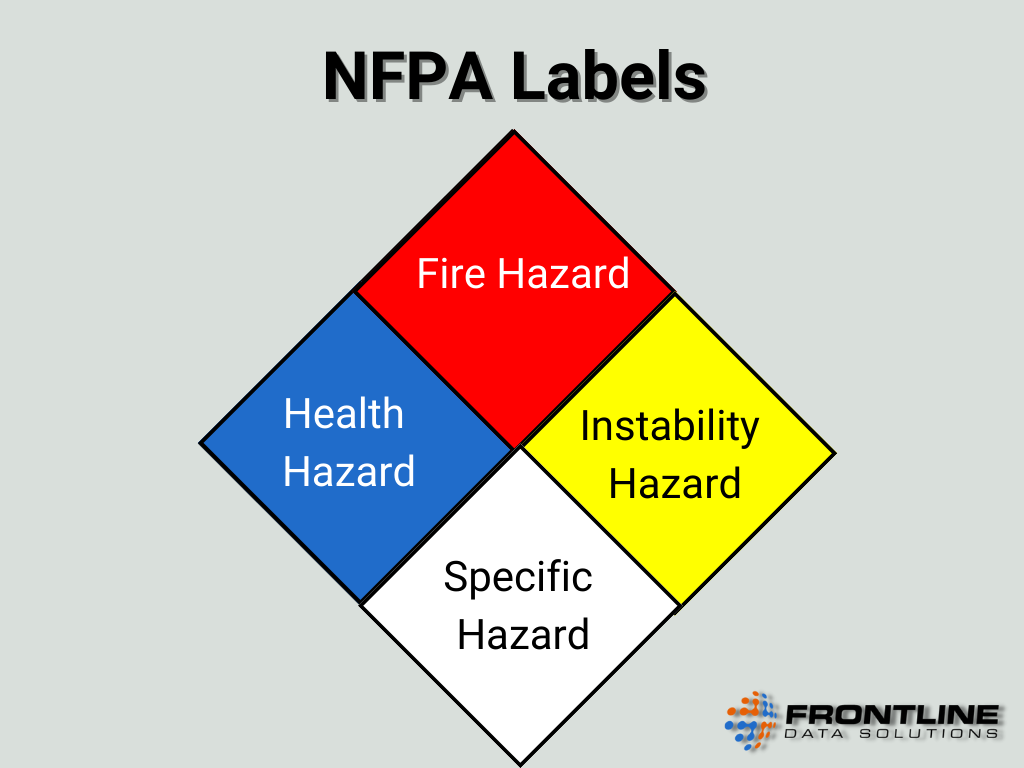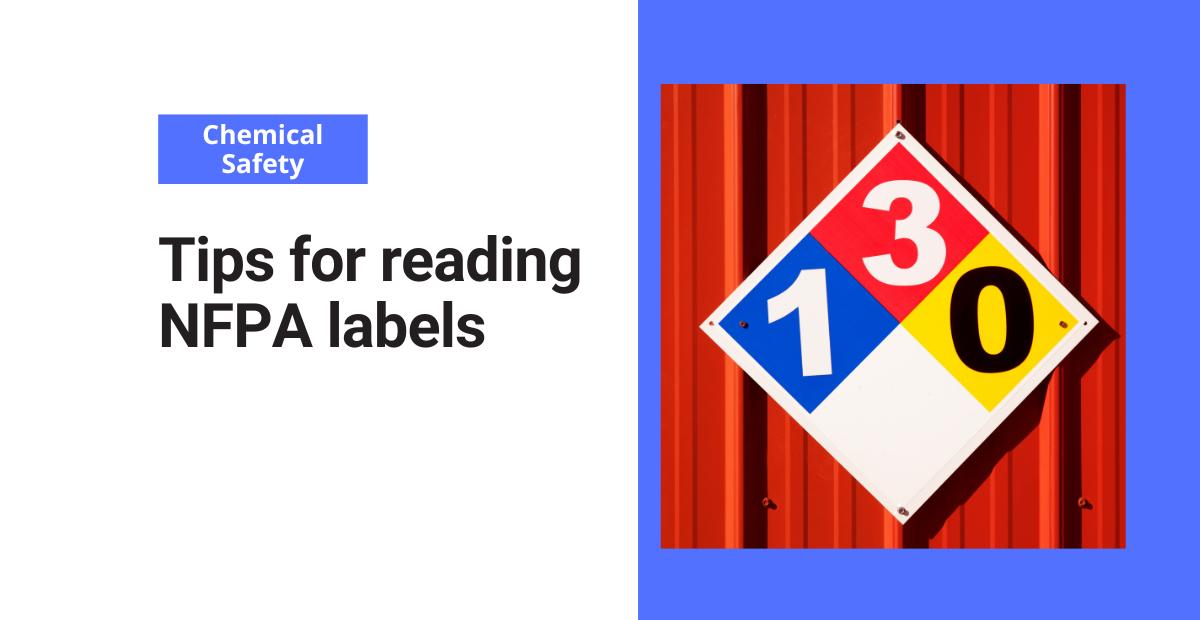Although OSHA revised its HazCom standard to correspond with GHS, many companies still rely on NFPA labels for potential hazard exposure. The National Fire Protection Association (NFPA) created the NFPA 704 label to provide helpful information about the hazards workers or emergency responders would be exposed to in case of a fire or chemical spill situation.
Different colors and numbers within the NFPA 704 diamonds help workers identify different hazards. But because of the variety of hazards involved, it can be helpful to rely on tips for reading NFPA labels. This blog will explain what NFPA labeling means and give tips on properly reading each label.
For beginners, the colors represent the type of hazard while the number represents the degree of the hazard.
Red section (flammability)
The red color symbolizes flammability and how susceptible the material is to catching fire. It is, therefore, considered the fire diamond.
0 – Chemicals with 0 flammability cannot burn. Even in typical fire conditions, the chemical involved will not burn when exposed to temperatures up to 1500°F.
1 – A flammability of 1 means that the material must be considerably preheated for it to be combustible.
2 – A chemical with 2 flammability calls for caution. It can burn when exposed to high ambient temperatures.
3 – A rating of 3 means the material is hazardous and that the chemical can burn or ignite in most ambient conditions.
4 – Severely hazardous. A chemical with a rating of 4 can easily or spontaneously ignite and must be handled with caution.
Blue section (health hazard)
The blue color symbolizes the health hazards that come with exposure to the material.
0 – A rating of zero means that the chemical does not pose more risks than any other combustible chemical.
1 – A chemical with a rating of 1 can lead to serious irritations.
2 – Level 2 chemicals may cause temporary incapacitation along with residual injuries.
3 – Chemicals with a level 3 rating can cause permanent and serious injuries.
4 – A chemical with a level 4 sign means that exposure could be lethal.

Yellow section (instability)
Yellow symbolizes how stable a chemical is. When a chemical is stable, it is resistant to chemical action.
0 – 0 on a yellow label means that the chemical is very stable.
1 – 1 symbolizes stable materials that may become unstable at increased pressures and temperatures.
2 – Level 2 chemicals can undergo change when exposed to elevated pressures, temperatures, or water.
3 – A chemical with a level 3 rating symbolizes serious instability.
4 – Level 4 chemicals are dangerously unstable and can react or detonate even under normal conditions. They need to be handled with extreme caution and kept in a well-regulated environment to avoid dangerous reactions.
White section (special precautions)
The color white symbolizes any special precautions regarding the characteristics of the chemical. Some examples of special precautions are:
W – A “W” within the white section means that the chemical is “water reactive.” The chemical may release dangerous gases, burn, or ignite when in contact with water.
OX – An “OX” symbolized that the chemical is reactive to oxygen.
SA – “SA” stands for simple asphyxiate gases. This means that the gas involved may reduce or displace oxygen in each area.



